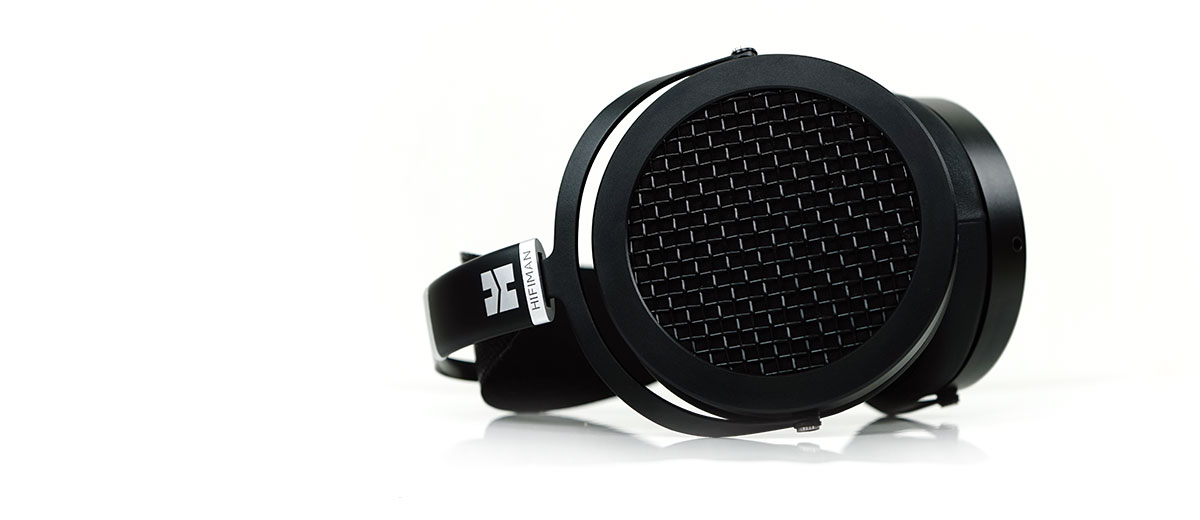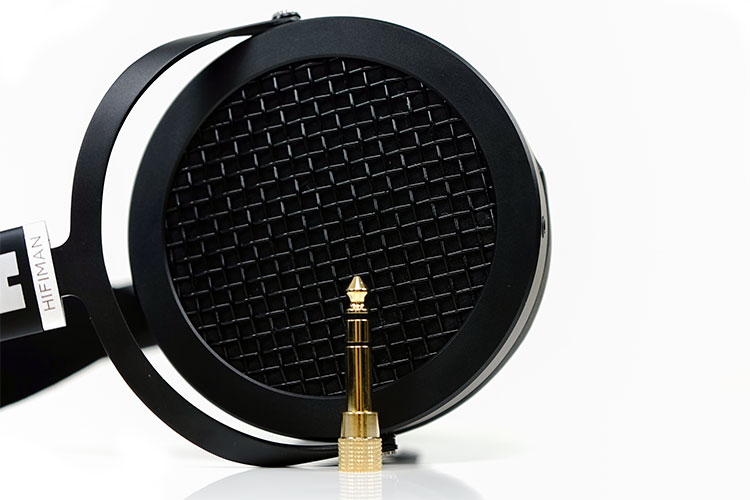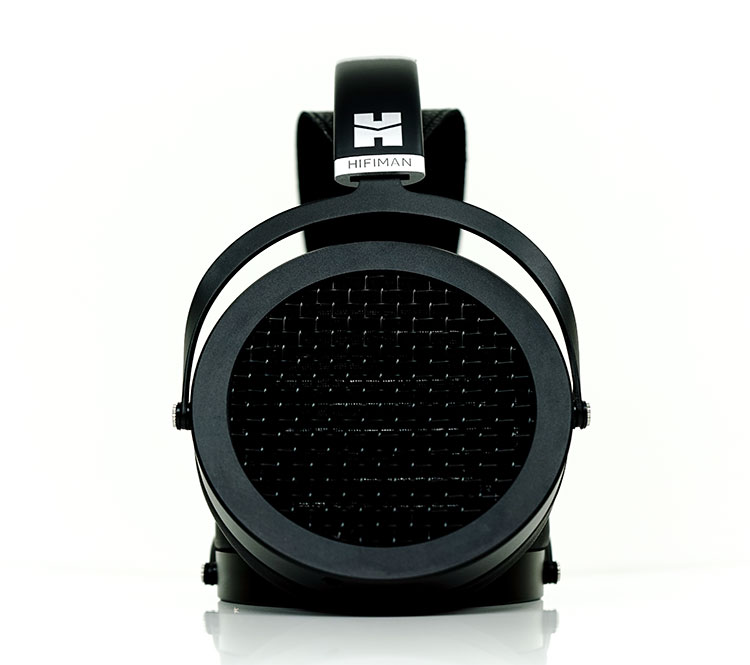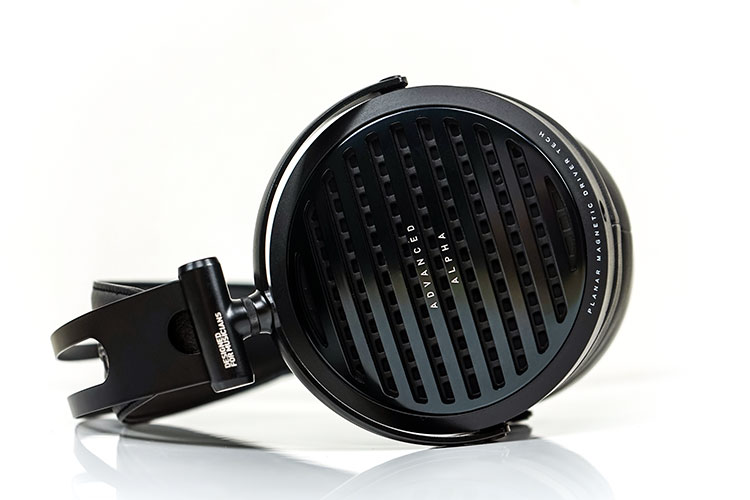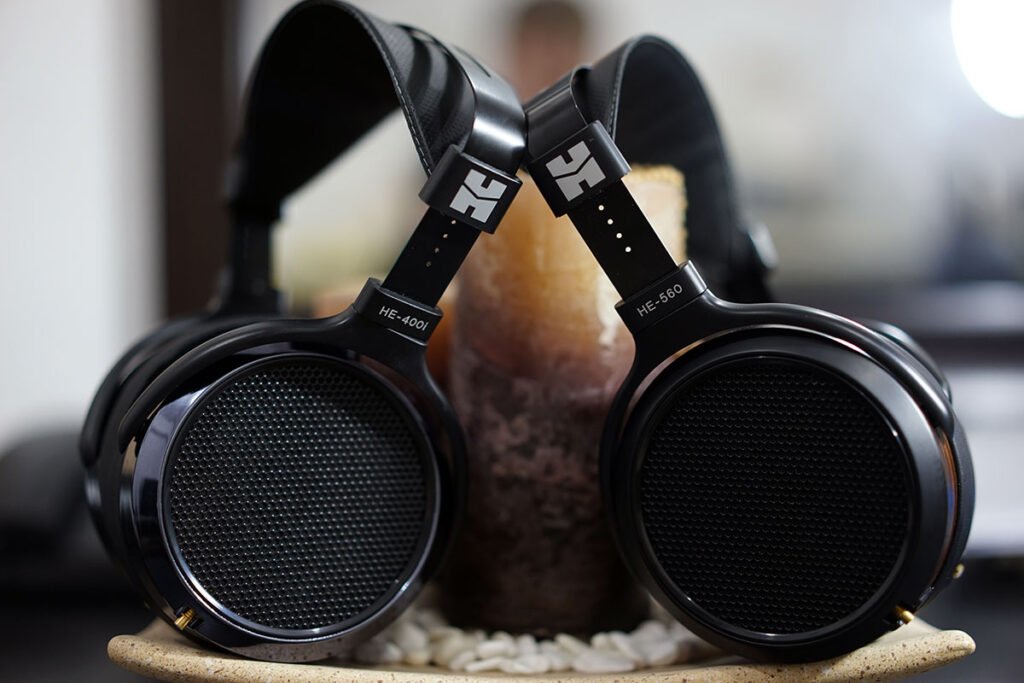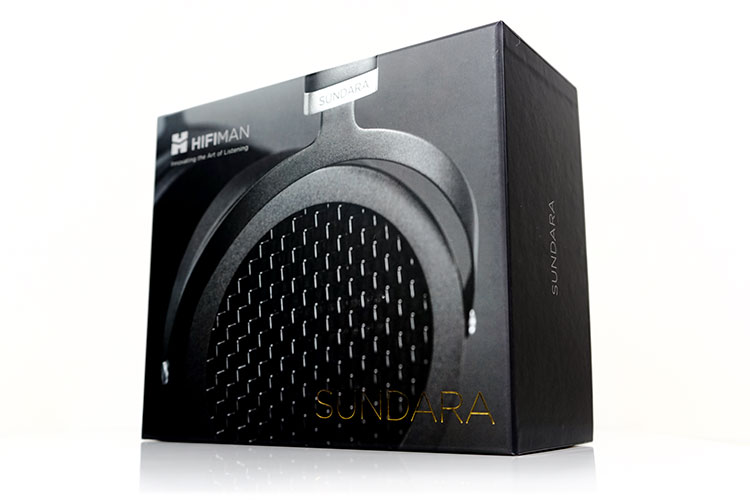Sound Impressions
Summary
Truth be told I did not like the Sundara tonality right out of the box. It sounded way too bright and hard sounding with an abundance of treble-forwardness.
However, after around 20 hours of playback which is not a huge amount of burn-in, the Sundara completely changed into an unbelievably great mid-fi open planar headphone experience. Gone was the treble harshness and in its place was a very clean, precise, and well-extended treble performance.
Overall the Sundara is a neutral-sounding headphone with a fairly neutral and linear low-end, a surprisingly balanced midrange with just the right amount of 1k emphasis, and a little dip towards 2-3k but not a huge amount.
The energy swing from the upper mids to the lower treble is elevated but well-controlled. It never sounds uneven right up to 10k also.
Whilst you might find some of the notes to have a harder edge and more odd-harmonic presence than warmer cans with a little roll-off you rarely find the Sundara to spew out sibilance or sound overly peaky. There is a nice balance to the timbre of the Sundara overall that will suit those who like it tight, clean, and clear.
Soundstage
The Sundara’s excellent transient response and dynamic range deliver an accurate and engaging imaging experience within a fairly spacious soundstage. It does tail off a little in terms of absolute depth with sub-bass presence just a little lower around 50Hz and below but I never got the feeling it was a shallow-sounding experience and it is fairly punchy sounding also when required.
Height and width are where the Sundara excels. Staging is not unnatural sounding either for my tastes. It is not a “left-right” experience with enough crosstalk and a neutral vocal presence to deliver a fairly open but natural-sounding presentation that avoids sounding diffuse or vague.
Bass
The Sundara bass is relatively neutral and linear sounding with a fairly flat response from around 70Hz to 400Hz before it starts to dip either side down to 10Hz in its sub-bass performance by about 4-5dB and 1-2dB going into the lower-mids.
It is not a dominating bass presence but it does have more than decent fundamental performance and most certainly it is not a soft or flabby sounding low-end.
I actually think Hifiman has tuned the bass performance on the Sundara very well indeed. It does not have the texture and detail of the higher-end models such as the HE1000 V2 but it is tight, pacey, and delivers a reasonably punchy mid-bass presence that is more engaging than the shallower sounding low-end of the HE560.
Mids
There is a tiny dip around 500Hz as you transition into the lower mids before it rises by around 3-4dB up to around 1K. Given the fairly smooth and controlled bass response of the Sundara, you do not get any bleed into the lower mids.
However, the additional elevation in the lower mids does thicken instrumental timbre a little above neutral which I personally quite like as it avoids sounding cold or overly analytical in its presentation.
Mids peak at 1k before dipping by around 4-5dB into the upper mids and lower treble around 2-3k. Generally, the vocals sound clear and accurate but not overly forward. Their positioning is relatively neutral so you get a sensation of being a few rows back with the Sundara rather than up and at ’em.
Treble
The Sundara treble is elevated and energetic but not overly peaky. In fact, it plateaus quite nicely and sounds far more coherent and balanced than what I originally heard right out of the box. You will find from around 3-4k onwards it does push forward and apart from some tiny suck out around 6-7k it stays that way right up to 10k.
Perhaps that tiny suck-out at 6-7k is what is preventing any sharpness and odd harmonic unevenness in the Sundara’s top end. Certainly, notes have a leading edge that is not entirely liquid sounding and in some parts, it is a little “hard” and exacting in nature.
However, this is not a brittle or thin-sounding splashy experience, not by a long shot. Instead, it is clear, clean, and very articulated sounding. This is perhaps Hifiman’s best-sounding treble to date in any of their mid-tier headphones.
Synergy
Sensitivity
The Sundara is rated at 37Ω and 94db sensitivity. On paper that might seem to be fairly easy to drive headphones but planar’s performance tends to mate better with good power rather than impedance matching. Output resistance ratings tend to really be much more of a factor for dynamic headphones which have a frequency-dependent impedance performance.
For example, the HE6 is rated at just 50Ω but was much harder to drive at just 83.5db as well as the use of gold in the diaphragm leading to a much higher resistance level. It was truly a hard headphone to drive with the initial production batch of which I own one.
Compared to the HE400i/560
What does all that mean for the Sundara? Well if you are coming from the HE400i which has a very similar rating you will not find too much of a difference between the two in terms of volume matching and power requirements.
The HE400i is rated at 35Ω and 93dB so virtually the same on paper. I am using a backplate v2 of the HE400i so I get a little more sub-bass aggression than the Sundara which sometimes gives me a perception that it is slightly louder on similar amp setups.
If you are leaving behind the HE560 which is rated at 45Ω and 90dB then the Sundara will come across as a little more efficient. There will be is a tiny bit of volume adjustment required but honestly, you can match and scale both quite well with similar amping setups.
Scaling & Synergy
Going Mobile?
The Sundara is not hugely efficient but it is nowhere near as inefficient as the older models and on par with the older HE400i and HE560. It is the old planar adage though with the Sundara. The more power you feed it the better it will sound.
Does the Sundara work well from a smartphone? In terms of volume, it is not terrible actually but you will always sense that the Sundara could do with a lot more headroom. The dynamic range is certainly reduced pulling in that otherwise spacious soundstage and producing what I would call a “samey” sound, particularly for mid-centric rock tracks.
If you are using an Onkyo Granbeat smartphone then yes it will do a fine job in high-gain mode given its much superior amping. It delivers a far better dynamic range than regular smartphones and good enough headroom.
Some DAPs will pair fairly well with the Sundara also but again power does play a role. You can expect the Questyle QP1R/2R to do an excellent job as well as stronger amping solutions such as the AMP 5 card from iBasso hooked up to their flagship DX200. I found it a little ‘limp’ and soft though from the Sony W1z and AK380 (without its additional amp).
Desktop
The Sundara is more at home as a desktop solution. Given it is an open-back design a quiet environment and a solid desktop amp will always provide optimal listening conditions.
Power around 1w per channel should be more than enough to drive the Sundara to satisfactory levels. Given it is a single-ended setup I would love to see how it performs with a balanced cable and amp setup but sadly none at hand with 3.5mm TRS connections, all 2.5m TRS.
In terms of synergy, I tended to err more toward tube amps or solid-state amps with a natural tonal bias for my listening preferences with the Sundara. The tube amp choices do not necessarily have to be overly warmed-up sounding. A presentation that is not overly sterile or bright will get the best out of the Sundara.
Excellent pairings for me included the Cypher Labs Sustain84, ALO Audio’s Studio 6, and Xi Audio’s Formula S solid-state amp. All of these amps have a smooth but clear-sounding presentation that allowed the excellent Sundara treble performance to shine and still kept it very natural sounding at the same time.
Select Comparisons
Advanced Alpha
$499
Technical
The Alpha is an open-back circumaural planar headphone priced at the exact same point as the Sundara at $499. It is rated similarly at 34Ω and just a little less sensitivity at 90dB compared to 93 dB. Both perform better with good power and a resolving desktop amp.
Build wise the Alpha is sturdy and has a degree of rotation in the pivots to allow it to fold flat. However, the Sundara has a nicer design with a more refined form factor and a more liberal use of aluminum throughout. It feels the sturdier of the two and it is also the lighter of the two at just 372g compared to the Alpha’s 425g.
Performance
Tonally both have an energetic top-end but I find the Sundar to be the more refined and balanced of the two in terms of treble delivery. The Alpha’s 7-8k is considerably more pronounced than the Sundara’s more plateaued mid to upper treble.
If anything, the Sundara’s 7-8k range is slightly dipped but not noticeably so, just enough to take away any overt hardness and sharp overtones to produce that well-controlled treble response. If you underpower the Alpha then that 7-8k region becomes a lot more dominant and peaky sounding.
The Alpha does have a bit more depth and sub-bass presence than the Sundara. It does not roll off quite as much as the Sundara once you drop down to around 50hz and lower. Instead, it stays relatively linear right down to about 20Hz which in turn sounds the marginally more powerful of the two.
The Sundara has a pacier low-end and slightly better dynamic range. It may not go as low or sound as powerful but the transient response is excellent. Rhythmic elements sound more “dramatic” and energetic to me with the Sundara.
Mids on the Alpha are a little more uneven also with a pronounced ridge around 2-3k compared to the Sundara’s flatter response. Vocals will come to the fore a bit more on the Alpha and instrumental timbre is just a little thinner sounding and slightly behind.
The Sundara has a modest 1k peak before it drops and rises again as it transitions into the lower treble from about 3-4k onwards. It feels the more coherent and spacious of the two for mids performance. Instrumental separation is clearer with nuanced spatial cues just that bit more accurate and easier to pick up on.
Hifiman HE400i/HE560
Both now discontinued
Technical
Both are now discontinued officially. The Sundara SRP of $499 suggests a replacement for the original SRP of the HE400i though the tuning goal apparently was close to the pitch of the HE560
For the record, the build quality on the Sundara is just so much better than either the HE400i or the HE560. I will admit some people may miss the swivel and physical articulation on the older generation pivots but the added durability of the more rigid arch of the Sundara might be worth it in the long run.
As mentioned already both these headphones have relatively similar levels of efficiency and impedance as the Sundara. There is not a huge amount of adjustment to be made when swapping between them during testing.
A good amp and resolving DAC will get these two, with the Sundara in particular, benefitting from 1W-2W on tap if possible. The HE560 is less efficient and harder to drive than either the Sundara or the HE400i. All three pair very nicely with resolving powerful tube amps such as the ALO Studio 6 or the more affordable Mjolnir 2.
HE400i Performance
For the HE400i it depends a little on the version you bought. Our office edition was one of the earlier ones, a 2014 model with a backplate on the driver which tended to amplify the sub-bass presence a bit more than the new models that do not have the backplate.
As such our 2014 model sounds a bit beefier in its sub-bass performance with slightly less roll-off than the more linear-sounding Sundara. My guess is the Sundara will equal if not better the later models and judging by the various charts of the new models that do seem to be the case.
The HE400i also has a bit more lower-mid elevation and warmth in its instrumental timbre than the Sundara. The Sundara opts for a more neutral midrange with slightly less lower-mid emphasis, greater instrumental clarity, and a slightly more spacious sound.
I also think the dynamic range and pace of the Sundara are just that bit wider and pacier. The Sundara also dips 2-4k whereas the HE400i is a bit more forward in comparison across the same range. Vocals will generally sound a little further forward on the HE400i as a result.
The Sundara treble performance is much more to my liking though over the HE400i. It sounds much more balanced and coherent with fewer peaks and valleys, particularly around 5-7k where the HE400i can take a big jump and sounds a little harsher.
The Sundara energy is high, maybe higher but it is plateaued across that 5-10k range with just a small dip around 7k. The final octave belongs to the Sundara with an elevated energy level of 10k and beyond compared to the HE400i’s rapid roll-off.
HE560 Performance
The Sundara is very close in its sound signature to the HE560, much closer than to the HE400i. It has the same linear low-end, perhaps even more so, and remains a little flatter than the Sundara right up to around 1k.
The Sundara shows a little bit more elevation around the same midrange point but not by a huge amount and honestly, there is not a huge amount of difference in both instrumental and vocal positioning between the two.
The difference between the two for me is the upper mids and treble performance. The HE560 is slightly harsher sounding with a sharper sounding attack around 3-4k than the Sundara.
The Sundara avoids sibilance a little more than the HE560. Though the 3-4k region of the Sundara is rising I get a feeling it is slightly subdued by comparison in the same region.
The treble on both are elevated but I have a preference for the presentation and timbre of the Sundara treble. It has a little more headroom than the HE560 and sounds the more coherent and slightly smoother of the two.
Sennheiser HD600
$399
Technical
One of Sennheiser’s classics, this open-back dynamic driver circumaural headphone has stood the test of time for many audiophiles.
Rated at 300Ω and 102dB this is a headphone that does need good matching though generally, I find it easier to drive than a lot of lower-rated planar headphones.
Underpower them and they sound hard and peaky with some sharp overtones. Just try it off a smartphone and watch that treble lose control. It is usually best matched with a good tube amp or a natural-sounding SS amp which is not too far off what I would recommend with the Sundara.
Performance
Tonally, the HD600 will come across as the livelier and more intimate of the two, especially in the mids which have a more substantial elevation from 1-3k compared to the Sundara which has a minor rise to 1k and then a dip from 2-3k.
The Sundara’s mids are a bit more neutral in positioning than the HD600 so will sound slightly more relaxed and linear in its delivery. It will, however, sound just that bit more spacious to my ear with slightly better instrumental separation and width to its staging.
Sundara’s bass is a little more extended for me than the HD600’s low-end with a touch more sub-100Hz presence and power. It sounds the more physical and deeper of the two sub-bass signatures. The HD600 has more of a mid-bass elevation though not by much but it is more noticeable with a punchier mid-bass presence than the Sundara.
The HD600 treble is quite different from the Sundara. The Sundara hits the lower treble on an upwards curve from the upper mids around 3-4kwhereass the HD600 starts a downward plot from 4k down to about 6k then elevates around 7k again. It has another peak again in the upper treble around 10k but it is not as noticeable as the treble elevation on the Sundara.
The Sundara is going to sound the more extended and airy of the two. This does contribute to a generally more open-sounding soundstage on the Sundara compared to the narrower HD600 which sounds more forward and has more snap and energy focused on the 7k region.
Our Verdict
If names are a thing then the Sundara should have more staying power than the previous numbered generation. There is a palatable step-up in both refinement of sound and build quality on the Sundara over the previous generation that will stand it in good stead.
The lack of cup swivel or fold flat might be amiss but the enhanced durability of the Sundara combined with its more robust headband makes it a comfortable fit, at least on my noggin.
I am definitely pleased with how the Sundara sounds. The price point suggests a direct replacement for the older HE400i but I think it is far more refined and coherent sounding. The treble, in particular, is done right for me. It is never harsh or overly peaky with excellent articulation and more than adequate levels of headroom.
The older HE400i came out at $499 back in 2014. The Sundara also comes out at $499 in 2018 sounding just that bit better and built to a much higher level of quality. For me, that represents a much better value proposition at the mid-fi level than before.
HIFIMAN Sundara Specifications
- Frequency Response: 6Hz – 75kHz
- Impedance: 37 Ohms
- Sensitivity: 94dB
- Weight: 372g
- Cable: 1.5m crystalline copper terminating in 3.5mm with a quarter-inch adapter

